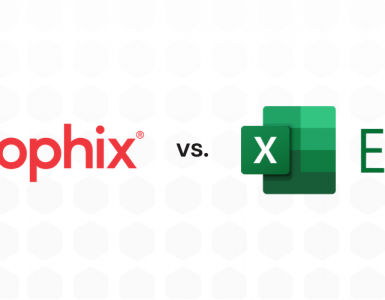Is your business data-driven? Trick question. Every business is. Can you imagine a successful company that made decisions without any data? By, say, throwing darts or dice?
Data-driven businesses are distinguished by both the quantity and quality of data at their disposal. More than that, these top performing organizations have the ability to process the data and generate meaningful insights. It’s so much more than profit and loss equations and performance projections.
Here’s where big data — that large volume of data that organizations have on hand — comes in. Below we share how big data can make a big difference for the Office of Finance.
Collect and Sanitize Data
With the sheer volume of data in existence today — 90% of which was created in the last four years — it’s not so hard to believe in a future where all corporate decisions are data-driven. But something needs be done about the quality of the data.
Daniel Newman, Principal Analyst, Futurum Research, CEO, Broadsuite Media Group thinks AI (artificial intelligence) is up to the job.
“Companies simply are overrun by the volume of data,” he says. “The key is balance, and using analytics, machine learning and AI as part of your business strategy is going to be the first step for many in terms of benefitting from AI by growing revenue and delivering better customer experience.”
There are three guiding principles in tackling the big issues of big data:
Integrate Data
Data integration helps Finance teams take control of the vast amount of data from sources such as Customer Relationship Management (CRM) and Enterprise Resource Planning (ERP) systems, market analysis, user generated inputs, and social media tracking. Using artificial intelligence to ingest, cleanse, and map to a target, allows Finance to aggregate and weigh the relative significance of extracted data for more actionable insights.
Consolidate Infrastructure
Simply put, big data needs a better-built house. An improved infrastructure is critical to simplify analytics, streamline workflows, and ensure optimal data governance across the organization. Finance leaders should look at consolidating sprawling data sets, introducing searchable archiving, and ensuring that new data sources find a good home within the improved architecture.
Connect Systems — Don’t Migrate
There may be a temptation to start by migrating current systems into an updated process that also leverages the power of AI. This is not the best approach, according to Oliver Christie, AI Consultant, Futurist, & Speaker.
“A clean starting point (for any AI-centric model) is a must, without legacy software, legacy hardware and most important, legacy thinking,” he explains. “The old ways of doing business are increasingly going to be challenged by the next wave of AI.”
Standardize & Set Definitions
Even in the world of Finance, words matter, especially when numerous titles are used to denote the same type of data input. If someone titles a field “Account,” another titles it “Customer” while a third uses “Customer Account,” the data can get really ugly, really fast. The same holds true if the a single term is being used to capture data inconsistently — for example if “Customer” was sometimes used to capture the company name and at other times the employee’s name.
In order to truly reap the benefits of big data and AI, Finance departments should strive for 100% consensus for data labels and definitions. While maintaining some variations in the data sets may be necessary. For example, for a global company dealing with numerous currencies, it’s critical that data can be processed in ways that allows it to be meaningful to every team member.
Apply Analytics
Combining big data with AI results in superior analysis and more actionable insights in terms of risk assessment, new opportunities and management trends.
“Given the high volume of accurate records and quantitative nature of Finance, AI has proven a very useful tool to deliver better decision-making tools and improve predictions on cash flow,” said Clara Durodié, AI Technology Strategist, Chair of Cognitive Finance Group.
Look Beyond the Finance Department
If you’re looking to recruit allies to share your enthusiasm for big data, you won’t have to look far. Customer-facing departments like Sales, Customer Service, and Marketing are increasingly looking to big data to guide decision-making about pricing, customer satisfaction, and campaign effectiveness. Human Resource departments are using big data to aid in employee retention, recruitment, and even to boost productivity.
Fundamentally, big data and AI can transform a business at all levels.
“In terms of running your business better, being able to do real-time pricing, being able to do trading automatically, being able to find rogue suppliers, supplies you are not delivering automatically, those are solutions that are here, they are ready,” said David Talby, CTO, Pacific AI. “We’re moving from the innovator to definitely the early adopter stage. Right now there’s opportunity for you to go and implement some of those systems with much lower risk than people perceive.”
Big data can have a big impact on the Office of Finance, from improving data collection through delivering improved analytics. To learn more about AI in Finance, visit our latest AI resource.






